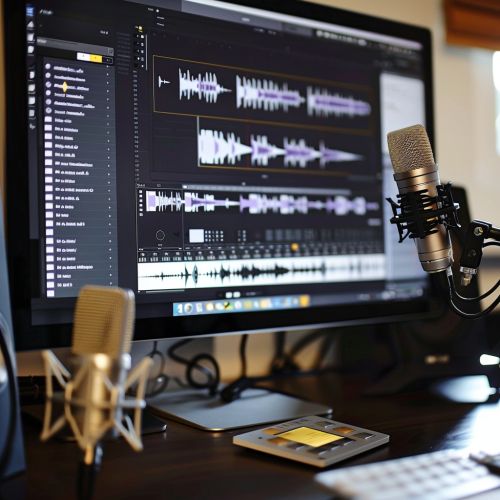Artificial Intelligence in Dubbing
Introduction
Artificial Intelligence (AI) has been making significant strides in various fields, and one such area is the realm of dubbing. Dubbing, traditionally, is a post-production process used in filmmaking and video production, where additional or supplementary recordings are "mixed" with original production sound to create the finished soundtrack. The advent of AI has revolutionized this process, making it more efficient, precise, and cost-effective.


AI in Dubbing: An Overview
AI in dubbing refers to the use of advanced machine learning algorithms and natural language processing techniques to automate the process of dubbing. This involves the use of AI-powered software that can accurately translate dialogue from one language to another, match the translated dialogue with the actors' lip movements, and generate a new audio track in the target language.
The use of AI in dubbing has several advantages over traditional methods. It can significantly reduce the time and cost associated with dubbing, as it eliminates the need for human translators and voice actors. Additionally, AI-powered dubbing can provide a higher level of accuracy and consistency in translation, as it is not prone to human error.
The Mechanics of AI in Dubbing
The process of AI dubbing involves several steps, each of which relies on different aspects of artificial intelligence.
Language Translation
The first step in AI dubbing is language translation. This is typically accomplished using machine learning algorithms that have been trained on large datasets of bilingual text. These algorithms, often based on neural machine translation models, can translate dialogue from the source language to the target language with a high degree of accuracy.
Speech Synthesis
Once the dialogue has been translated, the next step is speech synthesis. This involves generating a new audio track in the target language that matches the translated dialogue. This is typically done using text-to-speech (TTS) technology, which can convert written text into spoken words. Modern TTS systems can generate speech that is almost indistinguishable from human speech, with natural intonation and rhythm.
Lip-Syncing
The final step in AI dubbing is lip-syncing. This involves matching the generated speech with the actors' lip movements in the original video. This is typically accomplished using deep learning techniques, which can analyze the actors' facial movements and adjust the timing of the speech accordingly. This ensures that the dubbed dialogue appears to be spoken by the actors on screen, providing a seamless viewing experience.
Advantages and Challenges
While AI in dubbing offers numerous advantages, it also presents several challenges.
Advantages
AI dubbing can significantly reduce the time and cost associated with traditional dubbing. It eliminates the need for human translators and voice actors, and can complete the dubbing process in a fraction of the time. Additionally, AI dubbing can provide a higher level of accuracy and consistency in translation, as it is not prone to human error.
Challenges
Despite these advantages, AI dubbing also has its limitations. While AI can accurately translate dialogue and generate speech, it may struggle with nuances of language, such as idioms, cultural references, and humor. Furthermore, while modern TTS systems can generate natural-sounding speech, they may not be able to replicate the emotional nuances of human speech. Finally, while deep learning techniques can accurately match speech with lip movements, they require large amounts of data and computational resources, which may not be available to all filmmakers.
Future Prospects
Despite these challenges, the future of AI in dubbing looks promising. Advances in machine learning and natural language processing are continually improving the accuracy and naturalness of AI-powered dubbing. Furthermore, as more data becomes available and computational resources become more affordable, the use of AI in dubbing is likely to become more widespread.
